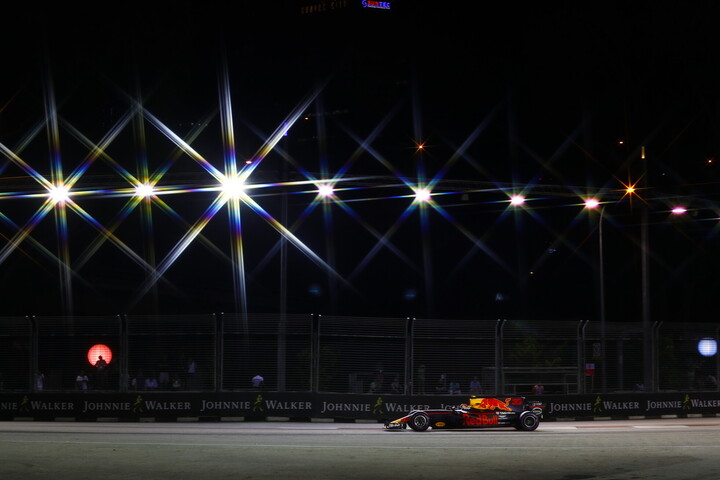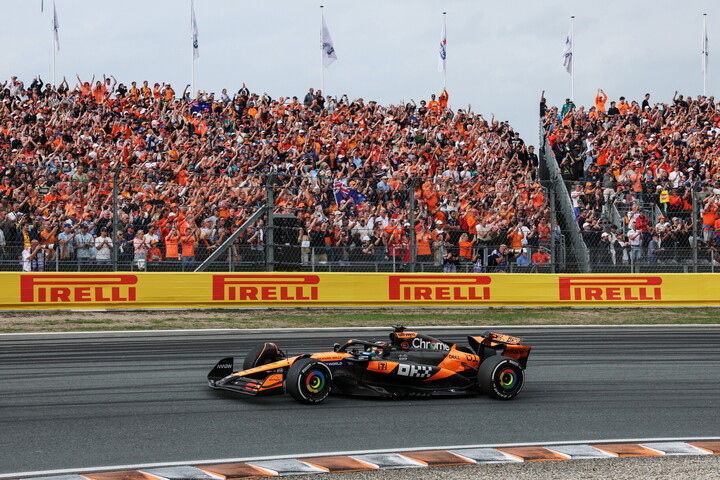On this week #39: Mika Hakkinen

Mika Hakkinen, who won the Formula 1 World Championship in 1998 and 1999, was born on 28 September 1968 in Vantaa, Finland. His father was a short wave radio operator and part time taxi driver and his mother was a secretary. Mika was only little when he took a shine to karting, soon proving to have real talent. Success came, first at national level, then across Scandinavia and the rest of Europe to the point that he abandoned his studies. In 1986, he attracted the attention of fellow Finn Keke Rosberg, the 1982 Formula 1 World Champion who offered to manage and mentor him in single-seaters. In a country where rallying was the favourite form of motorsport, Rosberg had ploughed his own furrow, becoming the first Finn to race regularly and win in Formula 1. Under his guidance, a young Mika starting racing in Formula Ford in 1986 in a Reynard which he bought off fellow countryman, JJ Lehto, a few years his senior. Mika competed in Scandinavian series for this category, winning the Finnish, Swedish and Nordic titles.

In 1988, Mika won the Opel Lotus Euroseries and in 1990 he was British Formula 3 champion, at a time when that series was a stepping stone to Formula 1. That same year, he was supported by Marlboro, becoming part of its World Championship Team, after impressing Ron Dennis and James Hunt, observers at a test session. At the end of that year, he first ran into, quite literally, the man who would become his greatest rival, Michael Schumacher. It happened at the Macau Formula 3 Grand Prix, considered the toughest and most prestigious Formula 3 race of the year. In the second and last race of the weekend, Mika tried to pass the German on the last lap, to win the result on aggregate over the two races, but he had to retire after hitting his rival who therefore took the spoils and the glory.
In 1991, the Finn tested a Formula 1 car for the first time with Benetton. However, he had doubts about the team and was drawn to a multi-year offer from Lotus and thus made his debut in Phoenix. The car wasn't as competitive as it had been up to a few years earlier and was on a downward spiral and the results did not much Mika's talent.
Nevertheless, his speed did not go unnoticed, especially by Ron Dennis who already knew him well. Mika was beginning to feel trapped at Lotus and entered into discussions with Williams and then with Ligier, but legal and commercial reasons meant that no deal was agreed. He therefore found himself at McLaren, thanks to the faith Dennis had in him, getting him out of the Lotus deal through the Contract Recognition Board. As from 1993, he was contracted to the Woking-based team and would spend the rest of his career there until his retirement at the end of 2001.
However, he spent much of that first year on the subs bench, only taking over Michael Andretti's seat for the end of the season. It meant that, for the final three rounds he found himself with the legendary Ayrton Senna as his team-mate, whose glorious time with McLaren was coming to an end, as he prepared to switch to Williams. He wasn't cowed by the three times world champion and on his debut with the team in Estoril, he was third quickest in qualifying, ahead of the Brazilian in fourth. At the following race in Suzuka, they were both on the podium, Senna having won, with Hakkinen third.
With Senna having moved on, 1994 was a transitional year for McLaren, its first season with the Peugeot engine, a relationship that immediately started to fall apart. Mika was thus the number one driver and finished on the podium six times, but he also proved impetuous, had several accidents, one of which earned him a disqualification. 1995 marked the start of McLaren's long and fruitful partnership with Mercedes, but the car was not yet on the pace and Mika's seasonal podium tally dwindled to two, in Monza and Suzuka, but the final round in Adelaide would prove to be far worse. During the final free practice session, he picked up some debris and the ensuing puncture meant he lost control of the car which flew into the barriers at over 200 km/h. It was a huge impact and the rescue crews found Hakkinen losing a lot of blood from his mouth and he was struggling to breath. The medical team, led by Formula 1's doctor Sid Watkins performed an emergency tracheotomy on the spot and saved his life. However, other injuries meant he would take a very long time to recover and it wasn't long before doubts were being raised about his return to racing. All that was dismissed at the start of 1996, after Mika showed all his old speed and flair in a private McLaren test at the Paul Ricard circuit in the south of France.
The Hakkinen-McLaren-Mercedes package made slow but steady progress over the next couple of years, still with a few too many accidents and some reliability problems which can be blamed for robbing him of a maiden win at Silverstone, Spielberg and the Nurburgring in 1997. In fact, he would have to wait for his 99th Grand Prix start to shake off the jinx, even if it wasn't a particularly inspiring race, marred as it was by the collision between Michael Schumacher and Jacques Villeneuve in their fight for the title at Jerez. In fact, after that, the Canadian, who only needed to finish third to take the crown, let Hakkinen and his team-mate David Coulthard pass on the last lap, as part of an unwritten agreement between Williams and McLaren over a dispute with Ferrari.

From then on, Mika's career was on an upward trajectory. The 1998 McLaren was a fantastic car and the Finn got the most out of it: eight wins, nine pole positions and eleven podium finishes took him to the championship crown, despite Schumacher putting up a fight, so that the title wasn't decided until the final round in Suzuka. In fact, the wonderful Japanese track would become a symbol of the rivalry between these two greats over the last three years of the last century. In 1998 in Japan, the German would not only have to win if he wanted to take the title, another driver would have to finish between him and the Finn, but the Ferrari man nearly stalled at the start and after fighting his way back up the order, a puncture meant he had to retire and Hakkinen was champion. For the 1999 Japanese Grand Prix, Ferrari's Eddie Irvine arrived in Suzuka leading Hakkinen by four points. Schumacher had broken his leg earlier in the year at Silverstone and had therefore been out of the title battle. However, the German had returned in fine form at the previous round in Malaysia: he was leading at Sepang, but naturally let Irvine through for his title aspirations and the Ferraris finished first and second, only to be disqualified when the bargeboards on the cars were deemed illegal. The Italian team appealed and the one-two finish was reinstated. Mika therefore needed to win in Suzuka to be sure of back-to-back titles. Schumacher was on pole, but Hakkinen went into the lead off the line and then pulled out a lead. When it was clear he was uncatchable, Schumacher spared the horses to make sure at least of the constructors' title for his team.
In 2000, Suzuka did not go so well for Hakkinen. The Ferrari was finally right on the pace and had a brilliant start to the season, so that Schumacher topped the standings early on. But then, he failed to score in the four races from Montreal to Hockenheim which meant Hakkinen was leading by the time they got to Hungary. Then at Spa, Mika pulled off one of the most famous overtaking moves in the history of the sport. Down the endless Kemmel straight at Spa, Schumacher dived down the left hand side of Ricardo Zonta and at the same moment, Mika squeezed past both of them on the right: with four races remaining he had an eight point lead. But Schumacher fought back with a win at Monza ahead of Hakkinen and again in Indianapolis on the sport's return to the USA, when the McLaren driver had to retire with engine failure. The penultimate round at Suzuka was Schumacher's first opportunity to clinch the title and, although Hakkinen again got the better of him off the second spot on the grid, the German fought back to take his third title and Ferrari's first in 21 years.

In 2001, the Italian team had the upper hand and McLaren had no answer even though Hakkinen won twice. However, his commitment was waning and at the end of the season, he announced he was taking a sabbatical to spend more time with his family, but nine months later the year off turned into actual retirement, at least from Formula 1. There were rumours he might return as McLaren struggled, but Mika only raced touring cars after that, with the official HWA team, racing AMG Mercedes in the DTM for three seasons, with a fair degree of success, taking three wins and a further five top three finishes.
Today, he is a regular visitor to the Grand Prix paddock, still very popular with the fans and highly regarded by his colleagues and the current crop of drivers. Like many Finns, Mika didn't talk much, but the Flying Finn's record speaks volumes: two world titles, 20 wins, 26 pole positions, 51 podium finishes, 25 fastest race laps. Over his eleven year period in the sport, only Schumacher did better.




